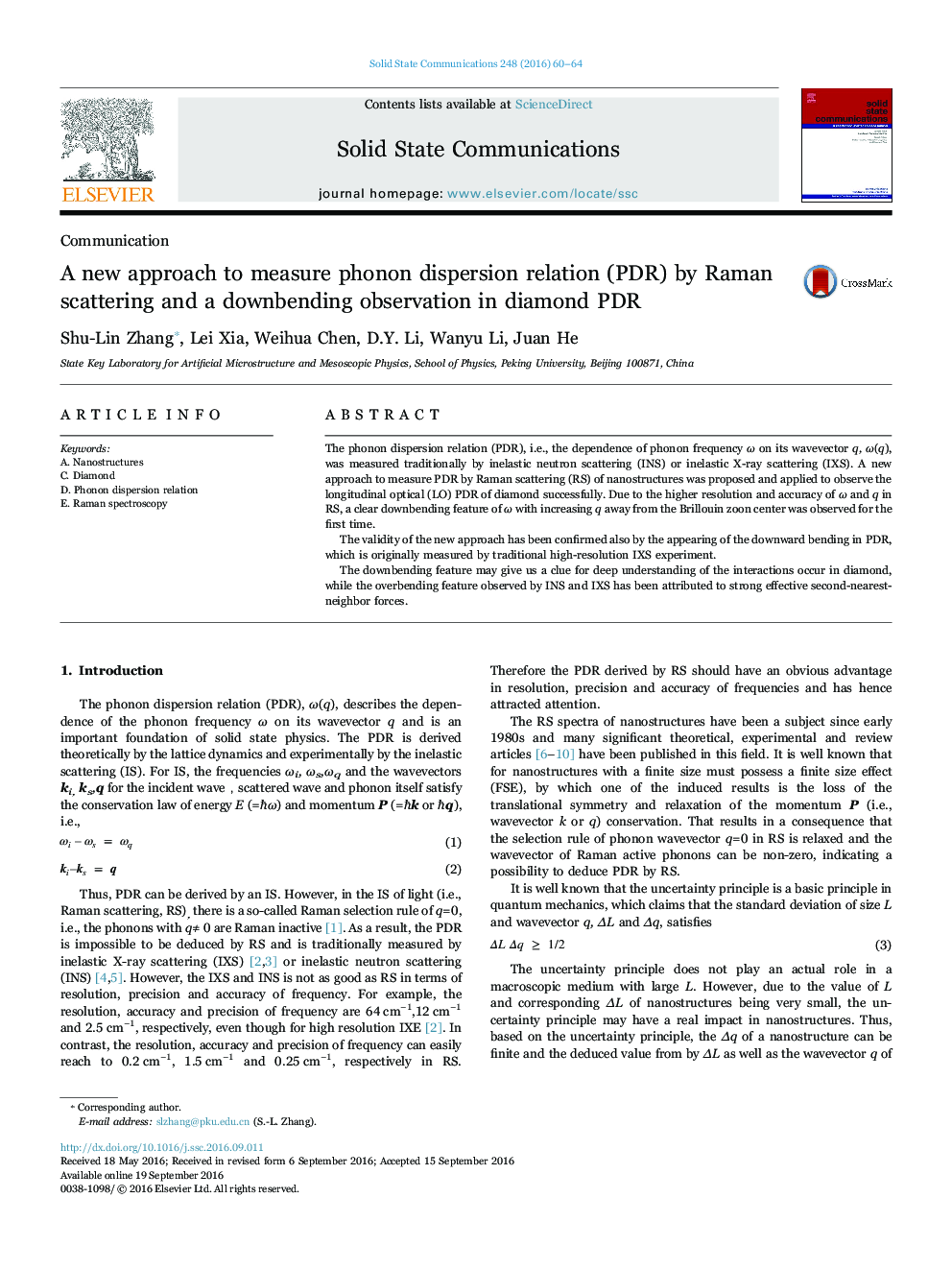| Article ID | Journal | Published Year | Pages | File Type |
|---|---|---|---|---|
| 5457400 | Solid State Communications | 2016 | 5 Pages |
â¢It is well known that the translational symmetry is lost in the nanostructures and thus the selection rule of q=0 in RS becomes invalid and the q can be extend to a nonzero value. Based on the mentioned above, an approach to measure PDR by RS of nanostructures is proposed.â¢As a sample to conform the reliability of the new approach, the PDR of diamond was derived by nano-crystalline diamond. Due to the higher resolution and accuracy of ¦à and q in RS, a clear downbending feature of? with increasing q away from the Brillouin zoon center in diamond PDR was observed for the first time.â¢The validity of the new approach has been confirmed also by the consistency of PDR feature obtained by different RS experiments by different types of nano-diamond.â¢Moreover, the validity of the new approach has been confirmed by the appearing of the downward-bending in PDR measured by traditional high-resolution IXS experiment.â¢Since the recent discovered overbending feature appeared in diamond PDR has been attributed to the strong effective second-nearest-neighbor forces, the newly discovered downbending feature should give us an important clue in delving the interactions presented in diamond.
The phonon dispersion relation (PDR), i.e., the dependence of phonon frequency Ï on its wavevector q, Ï(q), was measured traditionally by inelastic neutron scattering (INS) or inelastic X-ray scattering (IXS). A new approach to measure PDR by Raman scattering (RS) of nanostructures was proposed and applied to observe the longitudinal optical (LO) PDR of diamond successfully. Due to the higher resolution and accuracy of Ï and q in RS, a clear downbending feature of Ï with increasing q away from the Brillouin zoon center was observed for the first time.The validity of the new approach has been confirmed also by the appearing of the downward bending in PDR, which is originally measured by traditional high-resolution IXS experiment.The downbending feature may give us a clue for deep understanding of the interactions occur in diamond, while the overbending feature observed by INS and IXS has been attributed to strong effective second-nearest-neighbor forces.
